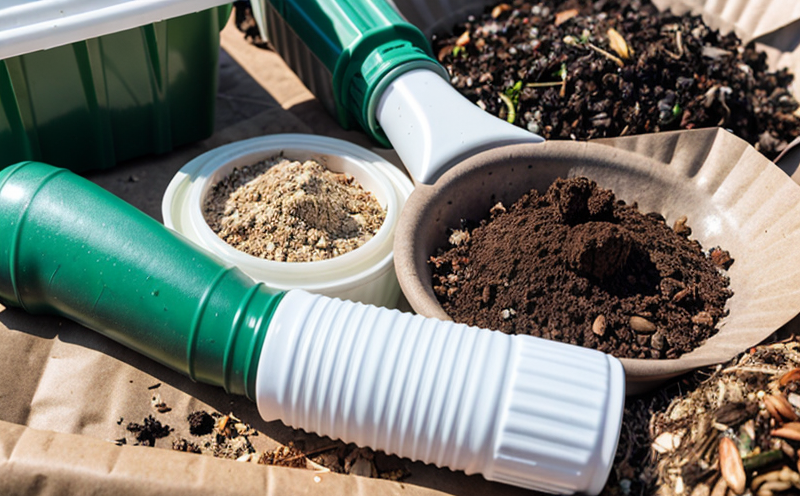Organic & Compostable Waste Testing
The testing of organic and compostable waste is crucial in ensuring that materials meet stringent standards for biodegradability, decomposition rates, and environmental impact. This service focuses on providing accurate, reliable, and compliant data to help manufacturers, researchers, and quality managers make informed decisions about product development and compliance.
Organic and compostable materials are designed to break down under specific conditions in the environment, such as high humidity, temperature, and microbial activity. This breakdown process should not harm soil or water, which makes these materials environmentally friendly alternatives to traditional plastics. Our testing ensures that products meet international standards for compostability, such as EN 13432 and ASTM D6400.
The importance of this service extends beyond the environmental benefits; it also impacts product lifecycle management, waste reduction strategies, and consumer perception. By offering comprehensive testing services, we support industries in achieving sustainability goals, regulatory compliance, and market acceptance.
Our lab uses state-of-the-art equipment to analyze samples for biodegradability, composting performance, and other relevant parameters. This includes incubators with controlled conditions mimicking real-world composting environments, gas chromatography-mass spectrometry (GC-MS) for identifying decomposition products, and calorimeters measuring heat generation during the breakdown process.
Testing organic waste involves a series of steps to ensure accurate results. Specimens undergo initial characterization, followed by incubation in controlled composting conditions for up to 12 months depending on the material type. Throughout this period, we monitor decomposition rates, gas emissions, and residual mass. At regular intervals, samples are analyzed using various analytical techniques.
The results of these tests provide valuable insights into the environmental impact of different materials during their lifecycle. This data supports product development cycles, helps companies choose sustainable alternatives for packaging or other products, and ensures compliance with regulatory requirements such as EU Regulation 1082/2013 on waste prevention.
| Parameter | Description |
|---|---|
| Biodegradability Index | Percentage of mass loss after composting under specified conditions. |
| Gas Emission Profile | Type and quantity of gases released during decomposition. |
| Residual Mass | The amount of material remaining after full composting. |
Scope and Methodology
- Specimen preparation involves detailed characterization to understand the composition and expected behavior under composting conditions.
- The specimens are incubated in controlled environments that replicate industrial composting processes.
- We utilize advanced analytical techniques such as GC-MS for identifying specific compounds involved in decomposition.
Why Choose This Test
- Accurate compliance with international standards like EN 13432 and ASTM D6400.
- Supports sustainable product design by ensuring materials meet environmental performance criteria.
- Provides robust data for regulatory submissions and certification programs.
Use Cases and Application Examples
This service is particularly valuable for companies involved in the development of biodegradable packaging, agricultural mulch films, and other compostable products. It helps them validate product claims, optimize formulations, and ensure compliance with local and international regulations.
For instance, a company developing a new type of compostable film would use our testing to determine its breakdown rate under various conditions. This information is critical for predicting the environmental impact of the material during disposal as well as ensuring it meets specific performance metrics required by certification bodies.
A manufacturer of biodegradable packaging may also rely on this service to assess how different additives affect the degradation process. By testing multiple iterations, they can identify the optimal combination that ensures rapid and complete breakdown without leaving harmful residues in soil or water systems.





